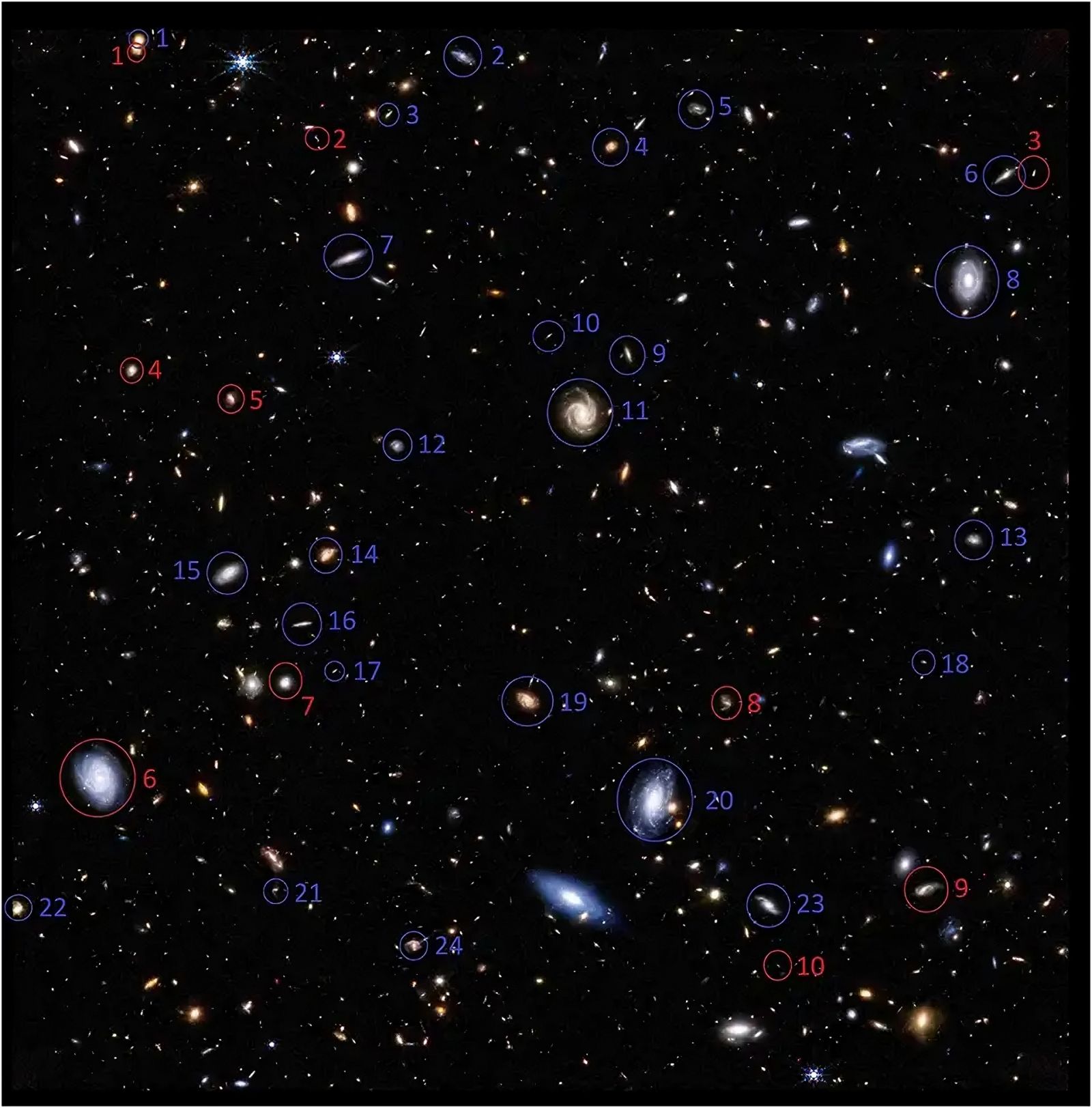Galaxies rotate in the same direction: are we inside a giant black hole? 🌀
Published by Cédric,
Article author: Cédric DEPOND
Source: Monthly Notices of the Royal Astronomical Society
Other Languages: FR, DE, ES, PT
Article author: Cédric DEPOND
Source: Monthly Notices of the Royal Astronomical Society
Other Languages: FR, DE, ES, PT
Follow us on Google News (click on ☆)

Spiral galaxies imaged by JWST rotating in the same direction as the Milky Way are in red, while those rotating in the opposite direction are in blue. The number of galaxies rotating in the opposite direction to the Milky Way, as observed from Earth, is significantly higher.
Since its launch in 2022, the JWST telescope has provided unprecedented images of the early Universe. A recent study, based on the analysis of 263 galaxies, shows that two-thirds of them rotate clockwise, while only one-third rotates counterclockwise. Such asymmetry puzzles scientists, as in a random Universe, a balanced distribution would be expected.
A surprising cosmic rotation
Galaxies, these immense structures composed of stars, gas, and dark matter, rotate on themselves. However, JWST observations reveal an unexplained preference for a specific direction of rotation. This discovery, published in the Monthly Notices of the Royal Astronomical Society, raises fundamental questions about the laws governing the Universe.
One of the hypotheses put forward is that the Universe itself was born rotating. This idea aligns with theories like black hole cosmology, which proposes that our Universe could be the interior of a black hole located in a parent universe. If this hypothesis is confirmed, it would imply a major revision of current cosmological models.
An illusion due to our own motion?
Another possible explanation is related to the Earth's rotation around the center of the Milky Way. This motion could create a Doppler effect, making galaxies rotating in the opposite direction appear brighter and thus more visible. If this hypothesis is correct, astronomers would need to recalibrate their distance measurements in the deep Universe.
This recalibration could also solve other cosmological mysteries, such as the observed differences in the expansion rates of the Universe or the existence of galaxies that seem older than the Universe itself. The implications of this discovery could therefore extend far beyond the simple rotation of galaxies.
To go further: What is the Doppler effect in astronomy?
The Doppler effect is a physical phenomenon where the light or sound of a moving object appears to change frequency depending on the direction of motion. In astronomy, this effect allows measuring the speed of galaxies. If a galaxy is moving away from us, its light is redshifted; if it is approaching, it is blueshifted.
In JWST observations, the Doppler effect could explain why galaxies rotating in the opposite direction to the Milky Way appear brighter. This could create an illusion of asymmetry in galaxy rotation, requiring a recalibration of distance measurements.